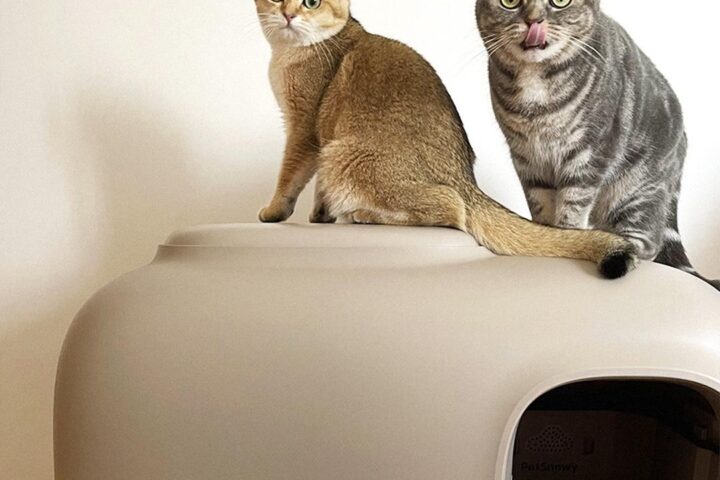Snakes can be fun and rewarding pets for beginners and hobbyists, and many breeds such as the Black headed python, Amazon tree boa, and western hognosed snake are large and unique while still being manageable for the average owner.
On the other hand, many experts recommend only experienced owners keep giant snakes. These breeds, such as reticulated pythons, green anacondas, and Burmese pythons, can be aggressive and irritable and can grow to be over 200 lbs- large enough to inflict real damage or even kill their keepers. These animals are best kept by zoos and breeders who know the challenges of caring for them, as well as having proper set-ups for their care. Here is how they do it.
Learn the Laws
In most states, it is not illegal to keep pythons and other snakes. In some states, there are restrictions on venomous snakes and snakes over a certain length. In other states, snakes are restricted because non-native escaped snakes pose a dangerous threat to wildlife and the environment. One of the first things expert snake keepers do is verify the legality of pet snakes in their area and obtain the needed permits.
How Large Snakes are Housed
Giant snakes are often kept in special-made enclosures such as wooden boxes or large custom-made cages. Most large snakes don’t need as much room as people imagine. Although they do prefer to be able to stretch out sometimes, they don’t explore much and aren’t usually very active because they are so heavy and large. Most pythons and boas are ambush predators who naturally stay still and hidden for most of their lives, and they are ground-dwelling animals who don’t need tall spaces to be happy. Breeders often keep dozens of snakes in large drawer-type setups where they can all be kept at the correct temperature and humidity.

What Large Snakes Eat
Large snakes are usually fed rats or rabbits. Most keepers prefer to feed warmed frozen rodents rather than live. Feeding live animals is usually considered less humane to the feed animal, more dangerous to the snake, and is more expensive. Finding live prey for snakes can also be difficult once they begin needing to eat rats and rabbits, as many pet stores won’t sell live animals for this purpose.
Handling Large Snakes
Pythons and boas can grow to be huge and difficult to handle. Some species of snakes commonly kept as pets, such as the reticulated python, can grow 15-20 feet long or even longer and weigh over 200 lbs. Handling animals this large can be challenging and dangerous if not done correctly. Snakes over 8 feet long should not be handled without help. Some experts recommend having at least one person for every 5 feet of snake, and more for heavy, aggressive, or irritable species.
Staying Safe Around Huge Snakes
Large snakes are notorious for their danger to their keepers and other humans. However, snakes are statistically less dangerous than dogs. It is true, though, that large snakes can be a threat to their owners as they are instinctive creatures who will occasionally strike at the wrong prey item or react aggressively to irritations like being touched or handled. If a huge snake strikes at its keeper, whether on accident or aggressively, it can be fatal as these snakes often go directly from a strike to a constriction behavior. Professional keepers have a policy of never feeding or handling large snakes alone and this is the most important. This person can help in the case of a snake trying to constrict a keeper. It’s also important to remove any prey scent from your hands and body to avoid triggering a feeding response and to be careful and deliberate around the animal so it doesn’t feel threatened. And finally, never ever drape a large snake around your neck. They can easily strangle someone unintentionally.
Transporting Large Snakes
It is difficult to transport and carry large snakes. Large, heavy-bodied snakes must not be lifted in one or two places as they need support under their body to avoid injuring their organs or spine. In addition, they are usually unhappy about being moved from their regular home. Transporting is stressful for snakes, so it’s important to keep them as calm and peaceful as possible. For this reason, it’s best if they are somewhat used to their transport container and it is dark and quiet. Many people use pillowcases or other cloth bags to transport small and medium-sized snakes because they are dark and soft and allow the snake to curl up and feel secure. For larger snakes, a normal pet carrier is often the best option. The snake will feel safer if there’s a hide in the carrier or it is covered with a blanket.
Why Beginners Should Not Keep Huge Snakes
Many experts agree that beginning and average pet owners should not keep giant snakes. They are hard to house properly as they require a lot of space and very secure enclosures. Large snakes are very strong and can easily escape from most enclosures. They also have specific temperature and humidity requirements that can be hard to provide in large enclosures. This means that many large snakes kept as pets are not cared for well and they become more irritable as a result. Maintenance duties such as feeding, cleaning the cage, and refilling water can be dangerous with large snakes and should only be done with two people present. Finally, feeding large snakes can become expensive and difficult and many people are not prepared for this reality. These are some of the reasons that many experts recommend against keeping these giant breeds of snakes.





